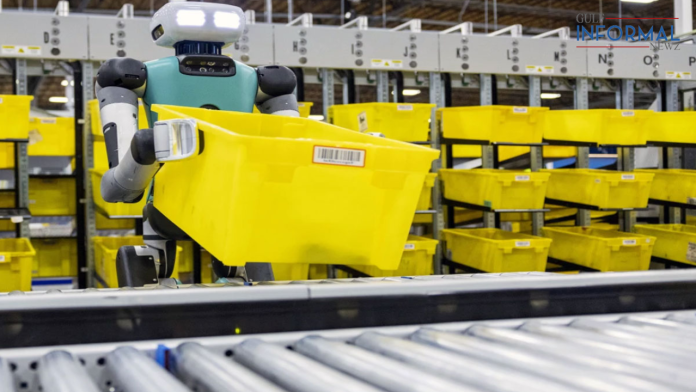The second largest private company in the world increases the number of robots it has to 750,000 instead of 100,000 employees
Amazon is accelerating its use of robots, having deployed more than 750,000 robots to work alongside its employees. And it counts Amazon The second largest employer in the world after Walmart, employing 1.5 million people.
While that’s a big number, it represents a decline of more than 100,000 employees from the 1.6 million workers it had in 2021. Meanwhile, the company had 520,000 robots in 2022 and 200,000 robots in 2019. While Amazon is bringing in hundreds of thousands of robots Annually, the company is slowly reducing its employee numbers.
The robots, including new models like Digit, a humanoid walker that can get up after a fall, as well as a second robot named Sequoia, are designed to perform repetitive tasks, thereby improving efficiency, safety, and speed of delivery for Amazon customers. For example, Sequoia’s robots speed up inventory management and order processing in fulfillment centers, while Digit, developed in collaboration with Agility Robotics, handles tasks such as moving empty boxes.
And it was Amazon Last October, it began experimenting with using the Digit robot, which walks on two limbs and is in human form and can get up after falling, as well as a second robot called Sequoia, according to Company blog To enhance the company’s arsenal of robots, which have reached more than 750,000Robot.
The company claims that the latest two of these robotic systems will enhance workplace safety and help Amazon serve customers faster at its fulfillment centers, by working with greater speed and accuracy for delivery estimates, while improving employee safety in the company’s facilities.
Despite the massive scale of automation in operations, Amazon asserts that the deployment of robots has created new skilled job categories at the company, reflecting the broader industry trend towards integrating advanced technologies with the human workforce.
Amazon’s deployment of more than 750,000 robots represents a significant step toward automation at the world’s second-largest employer. This shift has the potential to significantly impact business dynamics inside and outside the company. While Amazon maintains that the robots are intended to work collaboratively with human employees, assisting them with repetitive tasks to improve efficiency and safety in the workplace, concerns about job displacement and the implications for the workforce are inevitable.
Research conducted by institutions such as the Massachusetts Institute of Technology (MIT) has shown that industrial robots have a significant negative impact on workers, affecting jobs and wages in the areas where they are deployed. The broader discussion about the economic and political consequences of automation highlights widespread concerns about job displacement and the potential for increased income inequality.




